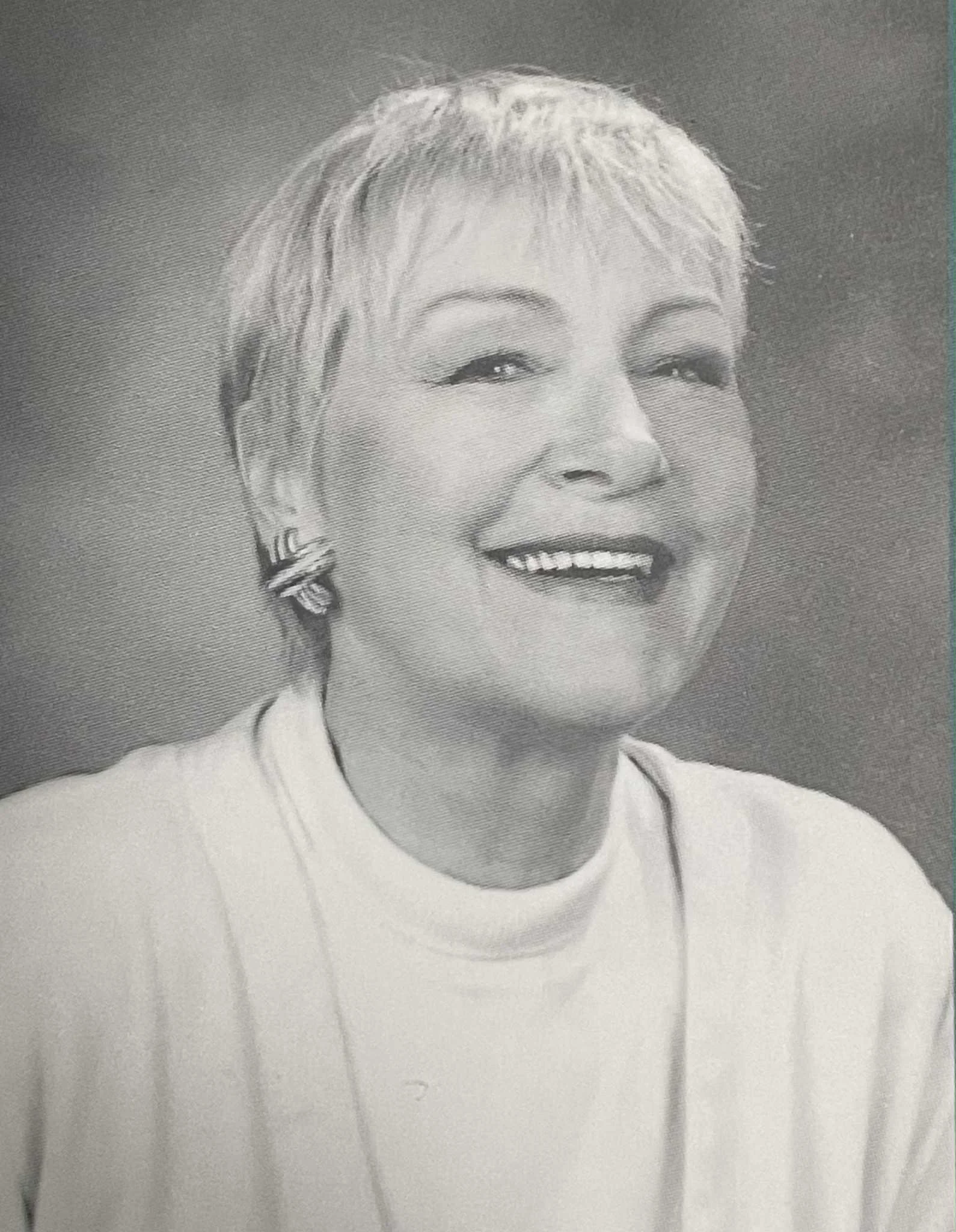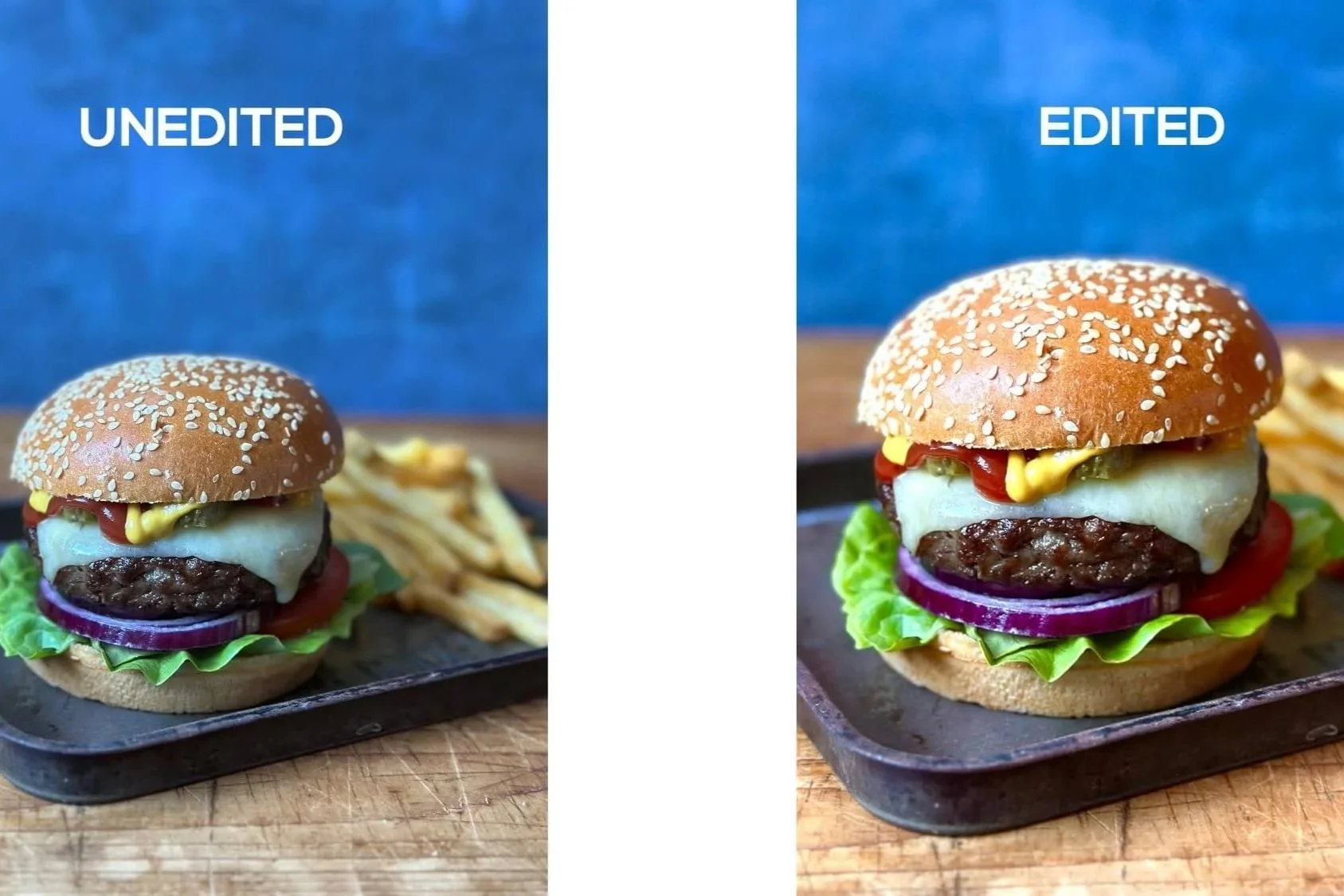Behind the Cookbook: The Original Thai Cookbook
Max Tan is passionate about classic cookbooks and is on a mission to ensure that pioneering cookbook authors are not forgotten. In this feature, published to mark what would have been her 90th birthday, he celebrates Jennifer Brennan’s groundbreaking 1981 work, The Original Thai Cookbook, which is now available on ckbk.
By Max Tan
On August 28, 2011, fire broke out in a residential duplex and killed a 76-year old widow living at the back of the building. Living alone, the widow was the only casualty of that horrible tragedy and was identified as cookbook author Jennifer Brennan
Following Jennifer’s passing fourteen years ago, food and cooking media outlets seemed completely silent with regard to the contributions of a doyenne whose final published project, Tradewinds and Coconuts: A Reminiscence and Recipes from the Pacific Islands, appeared in 2000. In contrast, her contemporaries including Marion Cunningham, Mimi Sheraton, and Madeleine Kamman, received glowing obituaries. Don’t get me wrong! I love Marion, Mimi, and Madeleine’s works just as the next cookbook collector and food aficionado. I just believe there is more to celebrate, appreciate, and remember Jennifer Brennan on what could have been her 90th birthday on August 20, 2025. The first step to that is to rectify this erasure of her rightful place within the food revolution in the second half of the twentieth century.
Just who is Jennifer Brennan and why does her life and legacy matter just as much as Julia Child, Diana Kennedy, Edna Lewis, Marcella Hazan, Alice Waters, Madhur Jaffrey, Irene Kuo, and Paula Wolfert? For the answer, look no further than her debut publication, 1981’s The Original Thai Cookbook—the first seminal book on Thai food written in the English vernacular.
Born in England, Jennifer grew up as part of a colonial family on the Indian subcontinent. After Jennifer’s father, Major-General Gordon Pritchard, was killed in 1957, her mother had Jennifer relocate to Bangkok to raise her young son. It was in the Thai capital where she would meet Prince Prem Purachatra, a grandson of King Chulalongkorn, who became her “culinary guide” to Thai food, while she, a commercial artist by training, juggled between the careers of designing silk furnitures and fabrics, disc-jockeying, and writing features and food columns for The Bangkok Post. When Ruth Reichl interviewed Jennifer for the Los Angeles Times in 1990 to promote the book, Curries and Bugles: A Memoir and Cookbook of the British Raj, Jennifer summarized Thai food in one word—“ADDICTIVE”.
Thai Cuisine in the Historic Nutshell of the American Food Revolution
At various points between 1962 and 1976, Jennifer lived in Thailand for a total of nine years. This was a time when the Cold War at its height and American military intervention in the Indochinese region was dominating global politics. Cambodia, Laos, and Vietnam had been embroiled in violent bloodshed during their respective civil wars. A military junta had seized the parliament of Myanmar (then Burma), fourteen years after it had gained independence from British rule.
Meanwhile, Thailand, having just reinstated their monarchy, allowed the United States government to establish American military airbases to combat Vietnamese and Lao Communist troops. Military tours and business trips to Thailand meant that American GIs and entrepreneurs brought back fond memories of Thai hospitality, culture, and food, leading Bangkok to become the top tourist destination in Southeast Asia, a status the city still enjoys to this day.
At the same time, the burgeoning American food community, which was also undergoing its own revolution, was becoming obsessed with the philosophical tenets of France’s nouvelle cuisine. The emphases on light and delicate dishes, the freshest ingredients available, and artistic presentation overlap with the clean, coherent, and vibrant flavors and aesthetics of traditional Thai food. In Pacific and Southeast Asian Cooking, one of the first English primers on Thai cookery, author Rafael Steinberg summarily described Thai cuisine as holistic, harmoniously full, stringently conservative yet selectively assimilating, and palatably and visually appealing because the country had the privilege of cultural independence and had not experienced the adulterating influence of European colonialism.
Thai ex-pats, seduced by “American Dream”, were becoming ubiquitous in America by the time Jennifer settled in California for a second time in 1976. However, they found it difficult to adjust to the taste of American food, which lacked the exquisite blend of flavors they were accustomed to. As a result, Thai restaurants soon started popping up across the country, catering not only to Thai communities but also to adventurous American foodies attracted to the nuances of Thai food and its appeal to all five human senses.
As the American food revolution intersected with the counterculture movement and entered its second wave between the late 1970s and the early 1980s, Thai restaurants were swept across the nation with Americans appreciating Thai food for its hot spiciness perfumed by a blend of fresh herbs, lemongrass, and chillies. Thai food stores offering essential ingredients were also spreading across U.S. cities. American home cooks were eager to learn this new Asian cuisine that was neither Chinese, Japanese, nor Indian. Enter The Original Thai Cookbook by Jennifer Brennan.
The Original Thai Cookbook is a classic which deserves to be revisited
Before Richard Marek Publishers released The Original Thai Cookbook in 1981, Thai culinary traditions were passed down through a kind of verbal osmosis. In the book’s preface, Jennifer indicated how the Thais had expressed little enthusiasm for transcribing their culinary know-hows on paper and considerable difficulty in translating their ingredients and techniques to the English language. Written documentation of Thai cooking in fluent English was scarce, inauthentic, and/or lumped together with the cuisines of the rest of Southeast Asian.
The aforementioned Pacific and Southeast Asian Cooking by Rafael Steinberg, which Time-Life published as one of the volumes from the Foods of the World series, is a case in point. It included only ten Thai recipes! No desserts! Not even poultry, seafood, meat, nor a vegetable dish! The first Thai cookbook published in America, 1965’s Siamese Cookery by Marie M. Wilson, relied so heavily on Americanized substitutions and on the author having neither charm nor spiritual affinity to the recipes she refers to as “Siamese”. The substitutions in this book are so radically severe and unrecognizable that the author can be easily accused of cultural insensitivity and appropriation with a guilty verdict in this day and age. Hence, Jennifer’s Thai cookbook, the first of its kind to suit the American kitchen and palate with the highest level of cultural credibility and fidelity, arrived at the fortuitous time of Thai cuisine being popular and fashionable; she told Ruth Reichl in 1990 that it was a “lucky accident.”
In that same 1990 Los Angeles Times interview, Jennifer claimed that her addiction to Thai food made her look for this kind of authentic fare to no avail when she first moved to America at the beginning of 1970s. Therefore, she learned how to cook on her own. Upon returning to Thailand for one last time in 1974, Jennifer spent the next two years immersing herself in local markets and testing recipes provided to her by the influx of local household cooks whom she invited to her Bangkok kitchen. According to Kristine Bonner, Jennifer’s daughter-in-law, she would even retest and taste the handed recipes for the sake of authenticity and reproducibility.
Jennifer's handwritten notes on Thai wontons, along with a typewritten manuscript showing her recipe for Green Curry Paste
Armed with this new breadth of culinary knowledge, Jennifer transformed her apartment kitchen in Los Angeles to an evening cooking school known as The Asian Experience in 1976 and taught Indian and Southeast Asian cuisine for the next six years, with the latter culinary specialization perhaps being one of the earliest, if not the first, in America. “Jennifer’s dedicated students, many of whom Jennifer kept in touch with, were clamoring for a cookbook, and that’s how the book came to be”, says Kristine.
The Original Thai Cookbook found its influential champion in Mimi Sheraton, the legendary food writer, food critic, and cookbook author at The New York Times. In her May 1981 New York Times article on Thai food and Jennifer, Mimi affirmed the book’s comprehensiveness and clarity, writing “Even those who cook infrequently or not at all will find that a thorough reading of that book will enhance one’s enjoyment of eating in Thai restaurants, not only because of the explanations of dishes but also because of the rich store of cultural and historic facts about the people and social customs of this enchanted country [Thailand].” Mimi even praised Jennifer’s passion for organization in cooking based on how she brought all the essential ingredients and categorized them for a specific dish and patience for precision in the use of knives, which included a small crescent knife used for delicate fruit carvings.
Three months later, Mimi Sheraton regarded The Original Thai Cookbook in her New York Times Degustibus column as a must-have in a basic cookbook library, alongside the two volumes of Mastering the Art of French Cooking by Julia Child and Simone Beck, Japanese Cooking: A Simple Art by Shizuo Tsuji, The Classic Italian Cookbook by Marcella Hazan, or any Mexican cookbook by Diana Kennedy.
Mimi’s placement of The Original Thai Cookbook as a fundamental culinary treatise on Thai cuisine is definitely spot-on and completely warranted. Like the aforementioned modern cookbook classics, the book is a genuine labor of love and devotion by showing hand-drawn illustrations, all done by Jennifer herself! Figures include what an arsenal of Thai kitchen utensils looks like, from the humble adobe-like charcoal stove to the unlikely pairing of an earthenware mortar and wooden pestle to the esoteric tools. Drawings of cutthroat dexterous techniques like carving chiles and root vegetables into flower-like garnishes, stuffing chicken wings for and spinning egg threads stimulate and encourage avid cookbook readers to allocate some personal practice time to acquire and learn a new culinary skill and master the craft of Thai cooking.
Jennifer also deconstructs the basic elements of Thai cuisine to the very specifics and their corresponding applications, which was then unheard of for Southeast Asian cooking. Coconut is broken down to the milk and the meat and to what can be done in the absence of fresh coconut milk, which is a common obstacle in Europe and continental North America. Types of rice are differentiated according to grain size which dictates their agglutination (or lack thereof) and how much water is needed for cooking. Jennifer also introduced tamarind, lemongrass, cilantro root, and dried fish as key components for the uniquely sour taste, citrusy aroma, earthy flavor, and smoky saltiness, respectively. With garlic, onion, and eggs, she brought new possibilities for them to manifest as garnishes, as opposed to the constant reliance on parsley to decorate dishes.
If there are two Thai culinary fundamentals that Jennifer might hypothetically need to update for the current time via minor revisions, they would be firstly the section on the flower flavorings and essences, wherein Jennifer mentions but does not offer translations for anjan (butterfly pea flower), a natural blue food dye, and lamciak (Pandanus tectorius)—which is known as the hala fruit in English, after its Hawaiian name. Secondly, the essential nam pla (fermented fish sauce) is mentioned in the glossary, but really warrants a more detailed explanation.
The recipes are The Original Thai Cookbook’s strongest asset. The ingredients and instructions are not just easy to procure and follow, but the dishes that Jennifer collated for the home cook to try out were also ahead of their time. She included two definitive Thai restaurant staples that were never mentioned by her predecessors, Kao Pad Supparot (Pineapple Fried Rice) and the ever-ubiquitous Pad Thai noodles. I tried her recipe for Moo Daeng (Roast Red Pork), which is a Thai interpretation of the Cantonese char siu, substituting palm sugar and nam pla in lieu of the honey used in the Cantonese version. I found its taste as faithful as what I would order in a casual Thai restaurant, a lean and tender meat packed with mildly flavors of sweet, salty, and umami.
Through The Original Thai Cookbook, Jennifer demystified classic Thai cooking not just under the gaze of Thai history and culture, but she also used Thai cuisine as a nexus to explore the culinary nuances of Southeast Asia and bring a distinct gastronomic identity to the region. This is evident in her following two cookbooks, The Cuisines of Asia and One Dish Meals of Asia. She would also become a contributor to Alan Davidson’s The Oxford Companion to Food in the field of Southeast Asian cuisine.
The Legacy of Jennifer Brennan
Despite her pioneering cookbook, Jennifer never became part of the conversation and her role in the American food revolution barely received a footnote. Yet, look around us. Thai restaurants are still thriving today; and the health-conscious gourmets still crave for the thoughtfully fresh, lean, balanced, yet aromatic diet, which categorically fits what Thai cuisine is in a nutshell. A decade after Jennifer’s tragic death The Original Thai Cookbook deserved to be better known and to find its place within the internet age.
A few months before writing this commemorative tribute article to Jennifer for her 90th birthday, I was able to track down her daughter-in-law Kristine and connect her to ckbk in the hope that Jennifer’s books could find a new audience. I am very happy that, as a result, The Original Thai Cookbook is now available in ckbk, with more of Jennifer’s books on the way. I hope every ckbk user will be enthused to cook from her book, just as her former cooking students were. Now is the time to keep Jennifer’s memory and legacy alive— to bring her from the dark confinements of a culinary hidden treasure, and elevate her into the status of food and cooking legend that she truly deserves!
Happy 90th Birthday, Jennifer Brennan—wherever you are, you are missed and will never be forgotten!
About the author
Max Tan discovered the pleasure of cooking and eating while pursuing his graduate studies in chemistry at the University of Minnesota. Since then, he began collecting cookbooks (from rare collectibles to modern classics) and antique culinary utensils that could aid him in becoming a better home cook as he transitioned out of research and academia and into his family business in the Philippines. Max is also a freelance writer advocating for preserving the lives and legacies of important cookbook authors.
See a list of Max’s all time top 10 cookbooks.
More ckbk features
Keep the recipes you need available in an instant using our new pinned recipe feature!
In the penultimate instalment of her 7-part course on food photography, Rupa shows you what can (and what can’t) be fixed in the edit
The Brazilian celebrity chef and restraurateur speaks to Luciana Corrêa about her cookbook, Brazil Rhythms and Recipes









